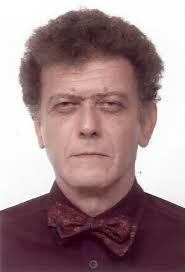 Institute of Applied and Computational Mathematics
IACM is one of the few research institutes in Europe dedicated to promoting the use of advanced mathematics in natural sciences and engineering
Institute of Applied and Computational Mathematics
IACM is one of the few research institutes in Europe dedicated to promoting the use of advanced mathematics in natural sciences and engineering

Adonis Moschovakis
I use applied mathematics to understand how the brain works. The brain is a highly complex piece of biological machinery, compartmentalized into several subsystems and made up of hundreds of billions of cells. The mechanisms that underlie brain processes, such as vision, learning, action, cognition, have been the object of intense inquiry for hundreds of years. Computational Neuroscientists strive to provide a description of the mechanisms that underlie such processes in the form of realistic models of the brain. Study of the properties and performance of these models allows one to evaluate the epistemic adequacy of available experimental data and the consistency of theoretical formulations.
I place particular emphasis on efforts to understand how the brain generates and controls purposeful movements such as orienting the eyes and the head towards object. What are the areas of the brain that participate in these processes and how do they generate the signals that control the relevant effectors? How are movement variables represented in the spatial and temporal properties of populations of neurons? How do the laws of physics, the geometry of objects manipulated and their mechanical properties influence command signals? I explore these and other questions by studying the neural control of movements of the eyes, the head and the arm. I am interested in the movement related activation of brain regions, the behavioral relevance of the discharge patterns of the neurons they contain, the connections they establish with other neurons and the psychophysics of movements evoked when units of the relevant neural networks are activated or lesioned. Finally, I use computer assisted neuronal modeling to evaluate the epistemic adequacy of the data and the consistency of the models they motivate.
I place particular emphasis on efforts to understand how the brain generates and controls purposeful movements such as orienting the eyes and the head towards object. What are the areas of the brain that participate in these processes and how do they generate the signals that control the relevant effectors? How are movement variables represented in the spatial and temporal properties of populations of neurons? How do the laws of physics, the geometry of objects manipulated and their mechanical properties influence command signals? I explore these and other questions by studying the neural control of movements of the eyes, the head and the arm. I am interested in the movement related activation of brain regions, the behavioral relevance of the discharge patterns of the neurons they contain, the connections they establish with other neurons and the psychophysics of movements evoked when units of the relevant neural networks are activated or lesioned. Finally, I use computer assisted neuronal modeling to evaluate the epistemic adequacy of the data and the consistency of the models they motivate.